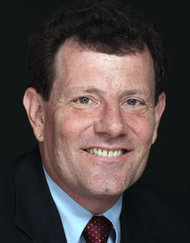Today’s guest blogger is Becky Rios.
The article “When Children Are Traded” was written by Nicholas Kristof on November 20, 2013 and published in the New York Times . This short article describes an exchange or trade of adopted children, whose placement have failed in their adoptive homes. It discusses international adoptions and the disruptions of these placements, due to the children’s multiple mental health or behavioral needs not properly addressed. It is evident in the article that there is very little resources available for families post international adoption, therefore it leaves children very vulnerable. It also describes our welfare system, and how it is often not equipped to handle the proper intervention for international disrupted adoptions. The incredible outcome of these failed adoptions unfortunately have created a ‘supply’ and ‘demand’ exchange or brokerage, for individuals to send their adoptive child(ren) to another adoptive home without any oversight by social services or legal decree. One of the strengths of the articles was that it not only gave samples quotes of parents and cases they had heard, but those examples helped illustrate the larger systemic issue in child welfare. It also did a good job in pointing out how vulnerable the children are in this process with no safeguards in place to protect them from potential pedophiles. Some of the limiting factors of this article is that it did not go into further detail with direct statistics about the amount of disruptions that occur in each state, and what are states doing or not doing to respond to this occurrence.
I believe the article dispels the myths that international adoptions are ‘happy ever after’ events, and that the children are being ‘saved’ from third world atrocities. The larger population in this country has the basic knowledge that adoptions signify an ‘end’ to the search for an adoptive home to so many children. It is also assumed that once an adoptive home is found , that the family will happily blend and become one happy family. Very little data is available about disrupted adoptions nationally, let alone internationally. There is a very little information about how child welfare systems are responding to the international disruption of adopted children. It further creates this other level of ‘need’ for adopted children with no safeguards in place to families/ individuals who do not have the best interest of children. This was a very eye opening article as I have very little knowledge about international adoptions and disruptions. The article can be found in the following link: (http://www.nytimes.com/2013/11/21/opinion/kristof-when-children-are-traded.html)

[…] View original post here: Re-homing in adoption – Center for Advanced Studies in Child Welfare […]